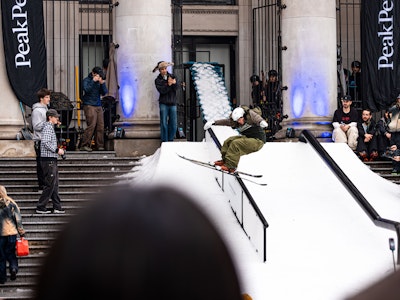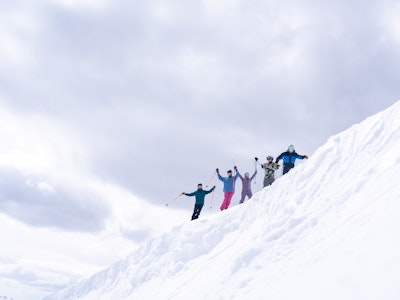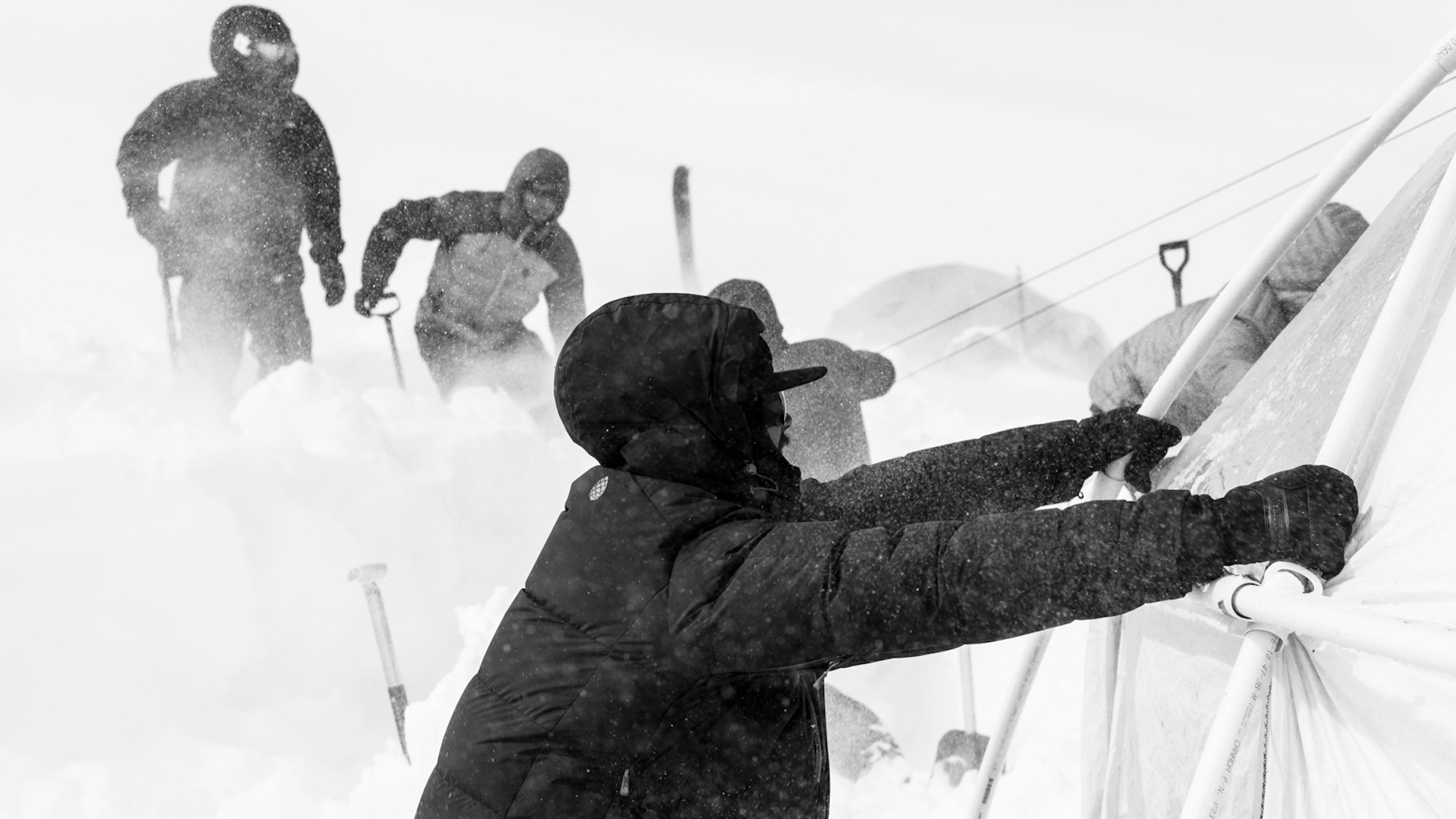

WORDS ■ GRIFFIN POST // PHOTOS ■ REUBEN KRABBE
The wind has been slowly increasing all morning. What started as a slight breeze at dawn has now escalated to a deafening roar that makes it difficult to even have a conversation inside of our massive tent. The tent itself isn’t fairing so well, either, and conversation is replaced with shifting glances between one another and looks of concern. Out here, on a glacier in the middle of the British Columbia Coast Range, the geodesic dome has served as a kitchen, lounge, game room and, generally speaking, a common area in which our group gathers to wait out the unrelenting storms. Sitting in a circle, nobody vocalizes what we are all thinking: Are we about to lose our shelter? Are we safe out here?


With one especially strong gust of wind, our level of concern goes through the roof, almost literally and figuratively. The canvas panels collapse, tent poles break and dishes go flying everywhere. Immediately, it’s all hands on deck. Half of us run outside to pull the tent back up while the others push from the inside. For several moments, it’s complete chaos. Instructions and ideas are yelled back and forth. The structure is so gargantuan and the collapse so great—the tent was homemade, in case you’re wondering—that it requires raw determination, teamwork and frankly, a stroke of luck for us to gain the upper hand on the situation. P-cord is tied around poles, joints are reinforced with duct tape, dead-men [pieces of wood, duffle bags and other objects buried in the snow to serve as anchors] are dug and eventually a massive, 10 foot by 30 foot wall is constructed around the tent’s perimeter, serving as a wind barrier. Several hours later, utterly exhausted now, we’re back in our home. Our looks of worry are replaced with blank stares. A sort of what-the-f#ck-just-happened vibe overcomes the gang as we take inventory of our situation: We’re ten days into the trip and we almost just lost one of our most crucial pieces of gear. The forecast shows no sign of improved weather conditions and we’ve hardly skied a single line.
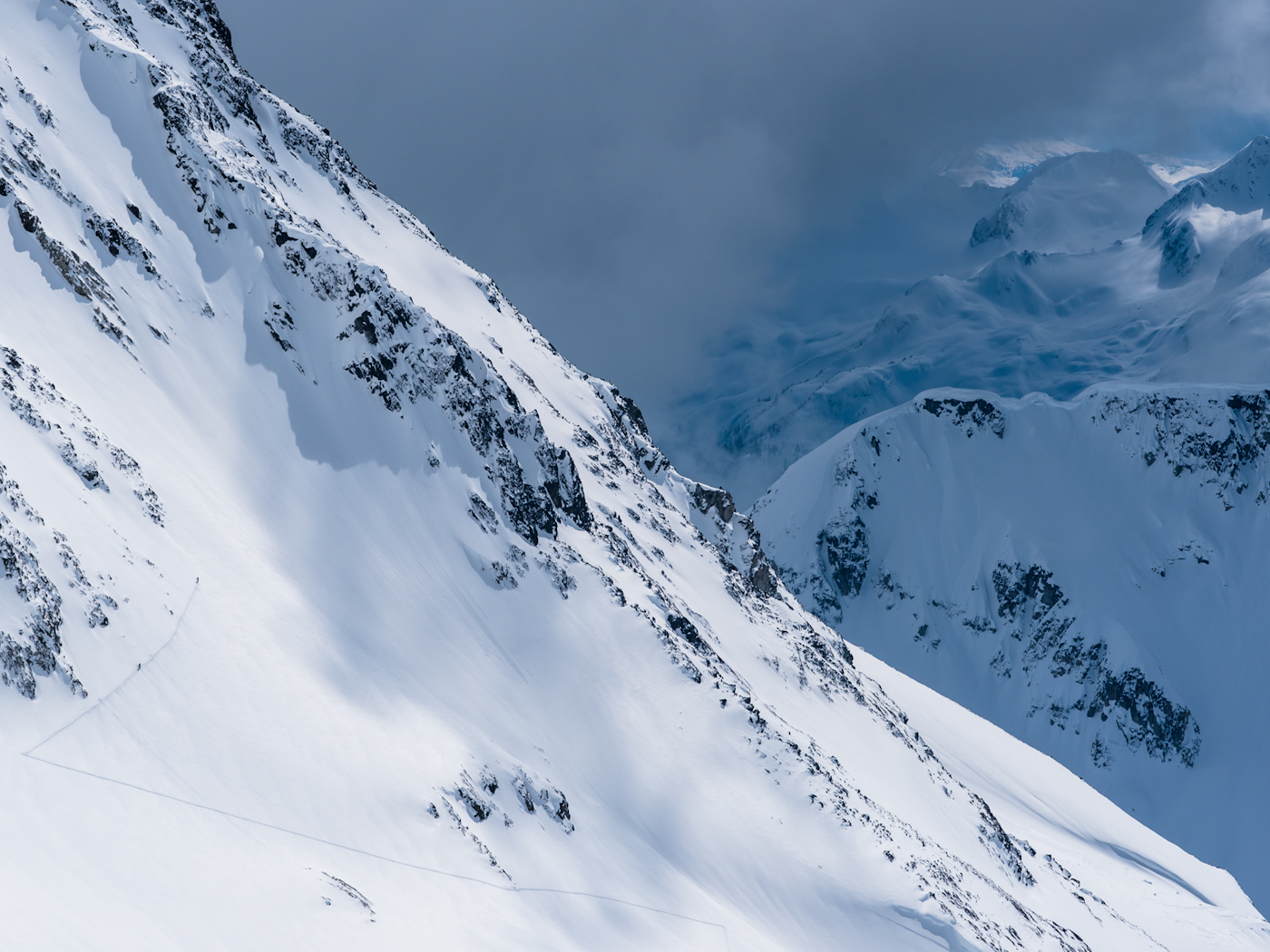
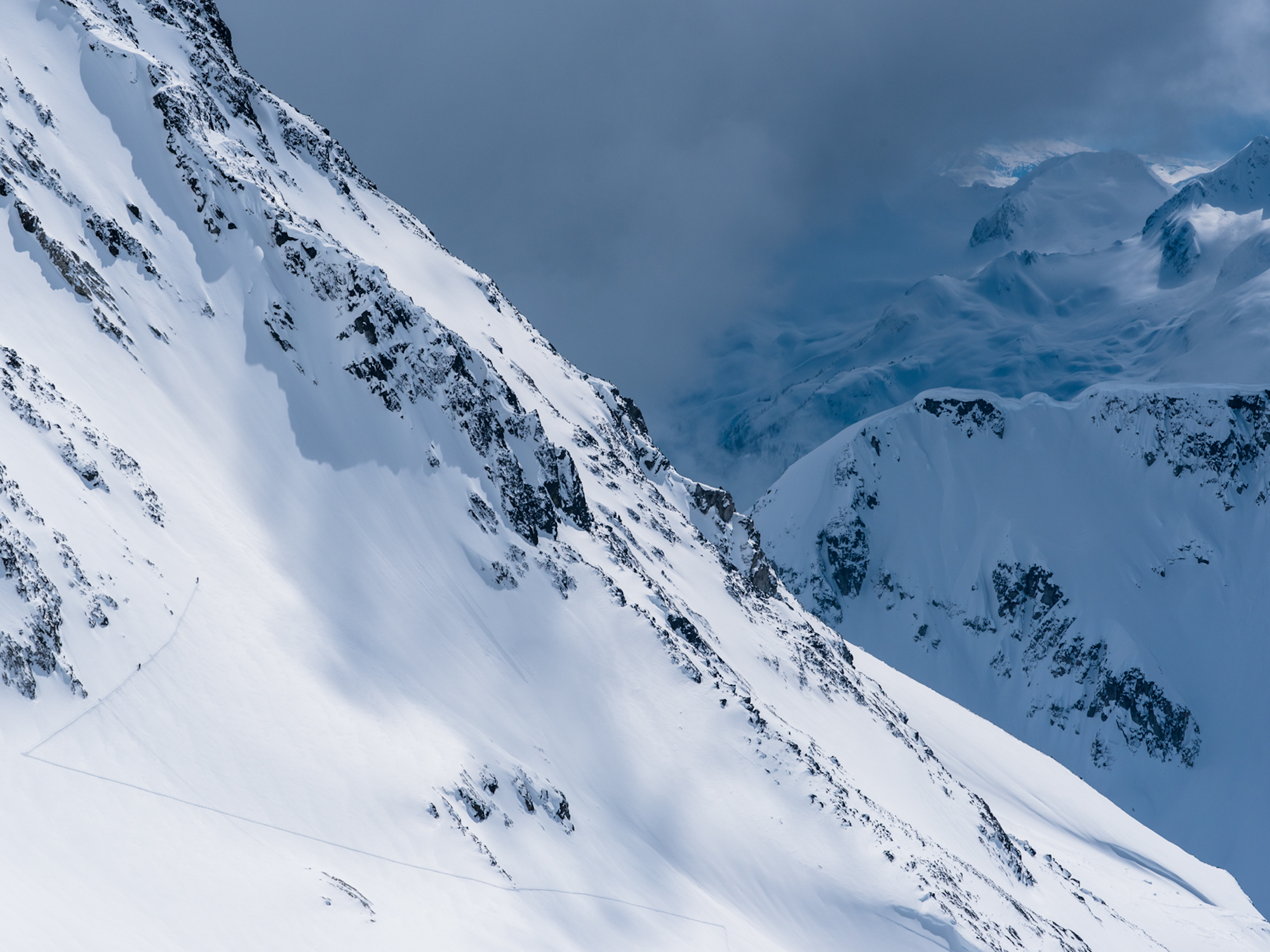


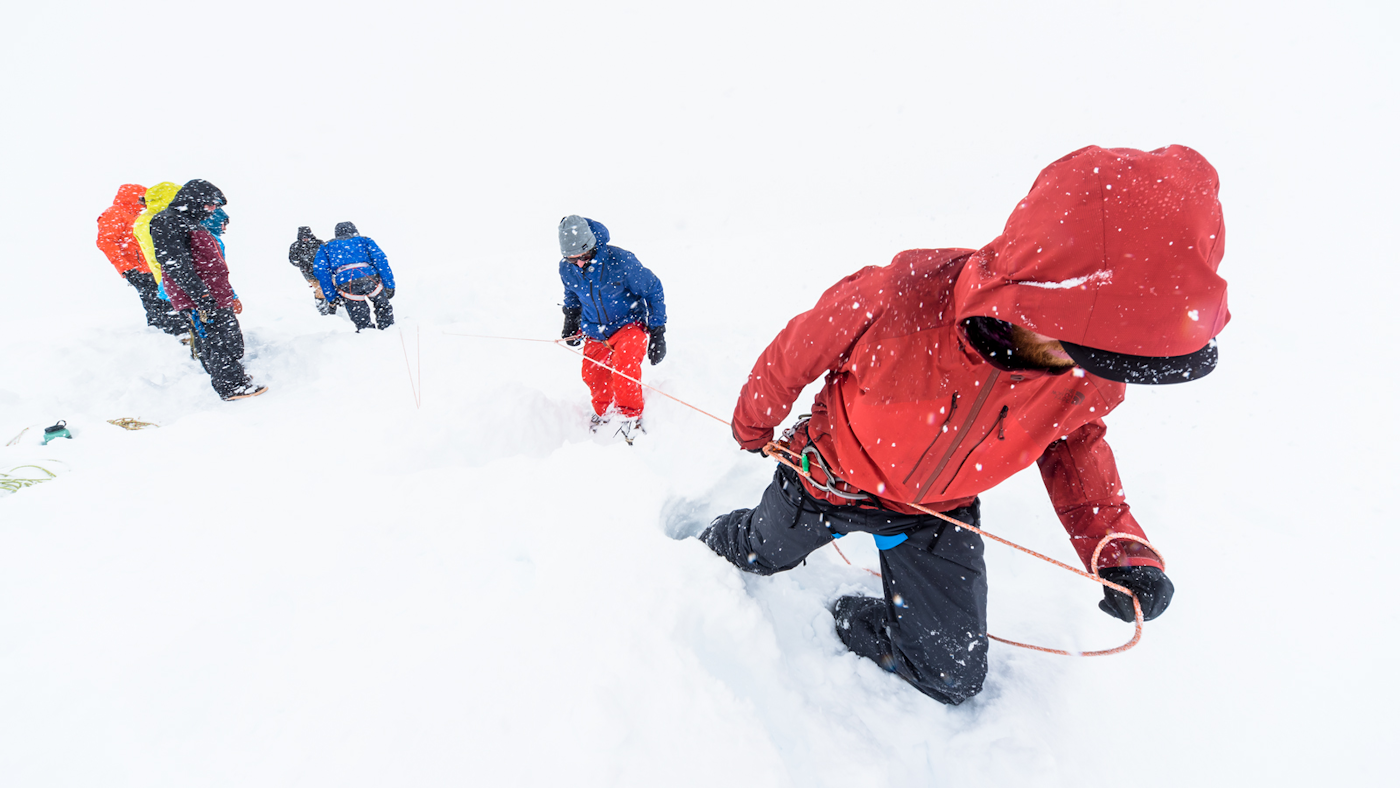
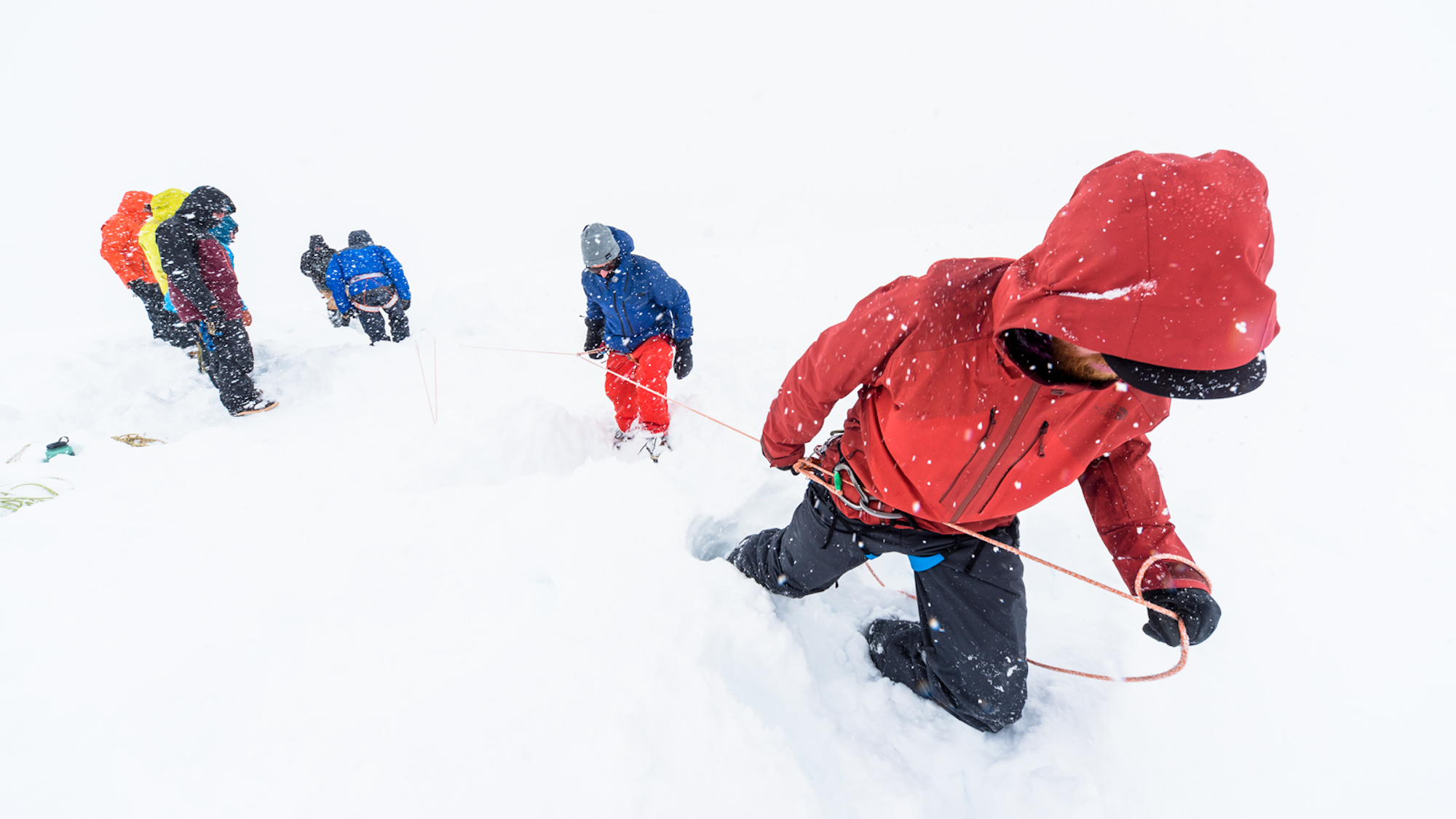
On paper, the idea for this trip was what big-mountain skiing dreams are made of: Helicopter in enough supplies for three weeks and set up camp in a small corner of BC’s Coast Mountains, just north of Whistler, where film-worthy lines abound and access to said lines is literally right outside the front door. The brain child behind this particular mission is Ian McIntosh, a BC native who has spent well over a decade exploring the mountains surrounding Whistler. Rounding out the crew is myself; Dane Tudor, a one-time backcountry booter star turned mountaineer and camping aficionado; renowned backcountry guide Zahan Billamoria; photographer Reuben Krabbe; camp manager Eric Richmond; and cinematographers Dutch Simpson, Austin Hopkins and Ben Dann, documenting the experience for Teton Gravity Research. It’s a certified dream team when it comes to ascending and descending rugged peaks. The constant clouds and incessant winds have done little in the way of eroding our stoke—a true testament to the strength and commitment of the group.
While we’ve had a few windows of half-decent conditions, we’ve yet to enjoy a full bluebird day. The weather, plus the ever-present hazards associated with being in a place so remote, has limited our skiing to a handful of mini-golf lines; the towering peaks above only tempt us. The snowpack is constantly evolving on account of consistent wind and snow. When we’re not mitigating the dangers of glacier travel we’re spending our days cutting through school-bus-sized cornices that protect most of the lines we seek to ski. We try to focus on the silver lining that what we’ve lacked in skiing, we’ve more than made up for in off-the-grid adventure.
Then, thanks to our satellite connectivity (and gosh, was it ever weak, i.e. slow), we receive news of a promising weather report. The once endless stream of cloud cover gives way to what appears to be a fully clear day, the day after tomorrow. Instantly, attitudes perk up and we speculate on how to make the best use of what we all perceive as a gift. Maps are spread across the tent, photos are analyzed and estimates are shared on how long it might take to trek out to some of the bigger objectives in our neighborhood. We consider tackling a handful of smaller lines within a short distance of camp, but eventually we settle on one behemoth, challenging and glorious peak. And just like that, gear lists are jotted down, potential approaches are hypothesized and what seemed like a dying dream just a few short days ago is now very much alive.


The 3,000 foot north face of Mount Sampson is as intricate a line as we’ve seen in the nearly two weeks we’ve been camping. One drainage over from our camp, the line starts out up top with a several hundred foot, exposed, northwest pitch before dog-legging to the left, to the north face proper. From there, it’s another 2,500 feet through massive ramps, seracs and couloirs to the valley below.
The climb up went smoothly, despite its complexity. A short skin was followed by a switch to crampons and ascent plates—small plates that fit between crampons and boots, providing extra float in the deepest of the deep, and sometimes hollow snow to gain the ridge. The knife-edge, precipitous ridge gave reason to exercise caution and we proceeded roped-up in teams of two, always on the opposite side of the ridge from our partner. The idea being, should one of us slip, the ridge and the rope would catch our fall—a technique that let us move quickly yet safely across nearly a mile of ridgeline. The last puzzle before reaching the summit was a nearly vertical, 20-meter section of rock. Our seasoned mountain-ninja, Zahan, lead the technical climb, placing some nuts and cams where he could up a narrow gully that consisted of mostly loose rock. Ian, Dane and I followed, on belay, finding moderately-comforting purchase with our crampons and ice axes.
Standing on top, now, we can finally appreciate the scale and exposure of the line: it’s consequential, committing and at the same time beautiful.


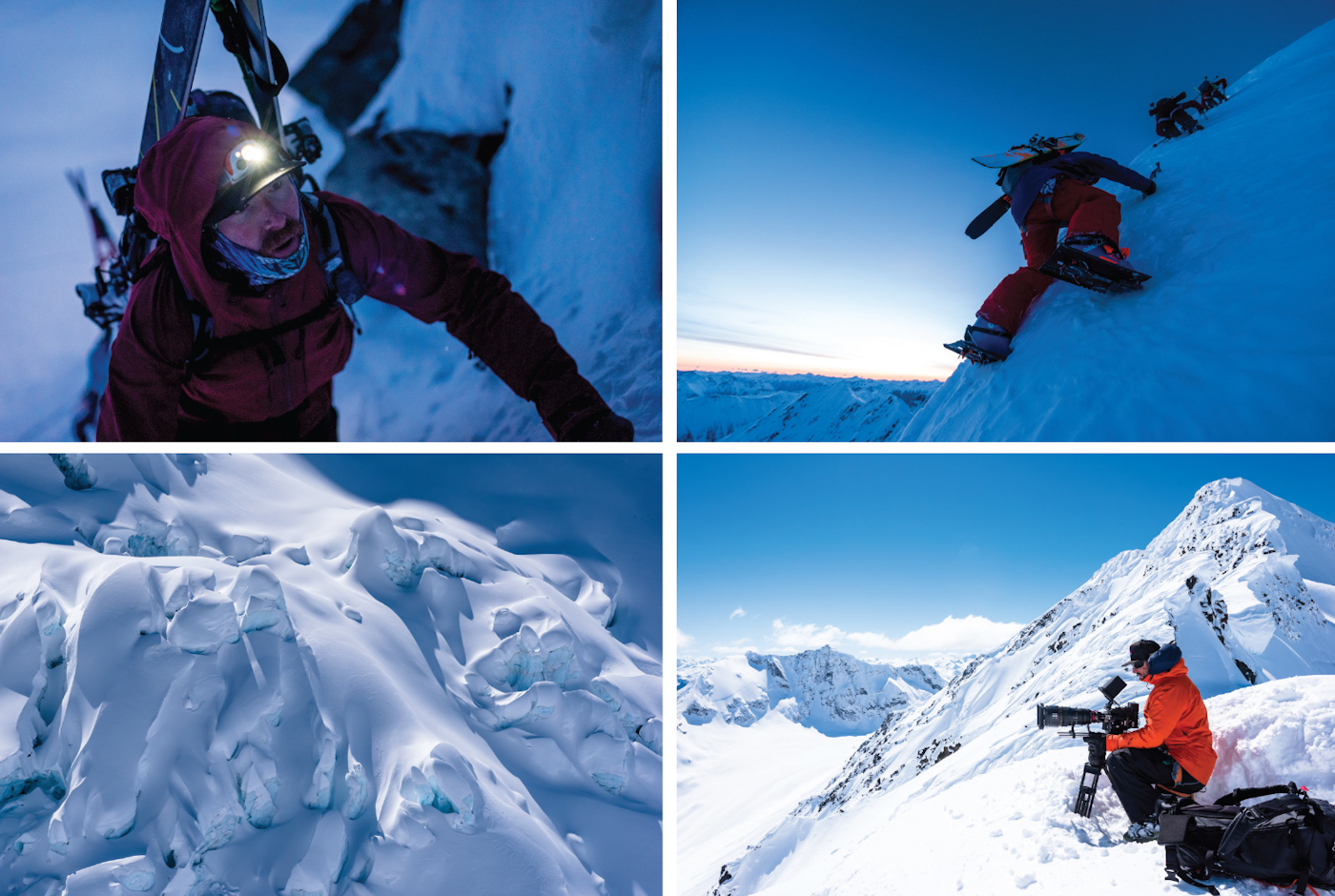
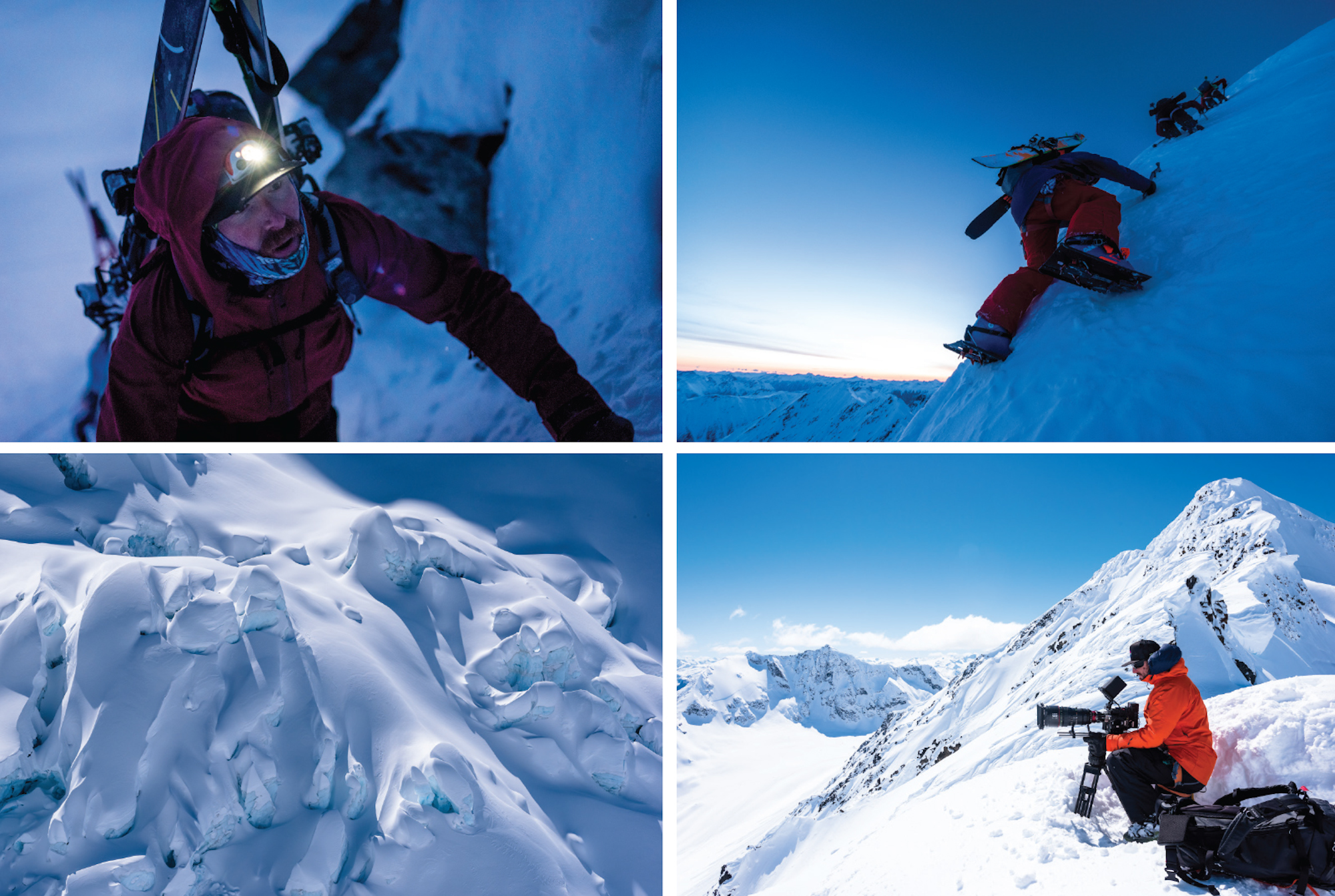


One of my favorite additions to the gear list for any backcountry trip is a mini LED USB lantern. After dark, or on early mornings, a little light in the tent goes a long way. Headlamps don’t need to be used, so you’re no longer blinding each other every time you look at someone and talk to them.
Camp chairs and lawn chairs become a hell of a luxury on these trips. Without a backrest, you spend all of your time hunched over on a snow seat with your shoulder curved forward. This addition to your kit can even mean the difference between a day of skiing in agony with a sore back or a happy day on the skin track.
Bring spare parts. Murphy’s Law is exacerbated when you’re a day of travel from a hardware store. Everyone in the group should bring one extra of everything, if possible. This includes a beacon, probe, skins, bindings, wax, skin wax, knives, matches and a bucket of lighters.
The team really could have brought a better reading library for the trip. Sure, we didn’t expect to have as many down days as we did, but I really would have expected that there would be more than five books brought by nine people. And two of them were mine. The crew on this trip certainly knew its way around camp parties and loved
to play dice. But, our literacy game could have definitely been more on-point.
Unlike most ski filming endeavors, in which one seeks out unique, individual lines, our group has decided to ski in generally the same area, largely due to safety concerns associated with being so remote. After some snow assessment and ski cuts on belay, we pack away the ropes and begin to drop in to the true north face after skirting around the northwest dogleg. Skiing last, I have a front row seat of a plan evolving to near perfection. The snow is delectable, boot-top powder and Ian and Dane leave massive contrails that catch the afternoon light as they make sweeping turns down to the meeting point. Finally, I too tip in. The snow is not overly deep, but provides just enough confidence to turn up the speed dial—within reason, of course, given the terrain.
We regroup near the most intricate part of the line: a choke between a rock wall and a massive serac, followed by a must-make left-hand turn above a several hundred-foot cliff, and down to the exit couloir. Dane drops first and immediately goes out of sight. Some tension hangs in the air before he comes back into view, flying into the apron some 2,000 feet below. His hoots and hollers echo off the surrounding mountains and provide instant feedback on the snow quality. I drop next and try to take in the stunning landscape while simultaneously skiing as fast as I can. I fly past the serac and stand strong on my right ski as I arc back to the left and into the exit couloir. I open it up as much as I can down the final channel and before I know it I’m exchanging high fives and stoke with Dane, albeit through labored breaths. Ian brings up the rear in his classic, hard-charging style, making only a handful of turns all the way down.
And, just like that, it was over. Days of preparation had all condensed to a matter of turns and minutes. Making our way back to camp, I couldn’t help but feel a massive sense of satisfaction and pride. On many trips like this, where we’re skiing for the cameras and the weather is fair, it’s all too easy to feel solitary—alone. This time around, success in every aspect came down to teamwork: From saving our geodesic dome to brushing up on our backcountry safety skills to skiing a likely first-descent, the shared sense of achievement is what resonates. That reality will always last longer and taste sweeter than any one accomplishment of an individual.
So, rally the troops and designate your next big objective. Adventure awaits.

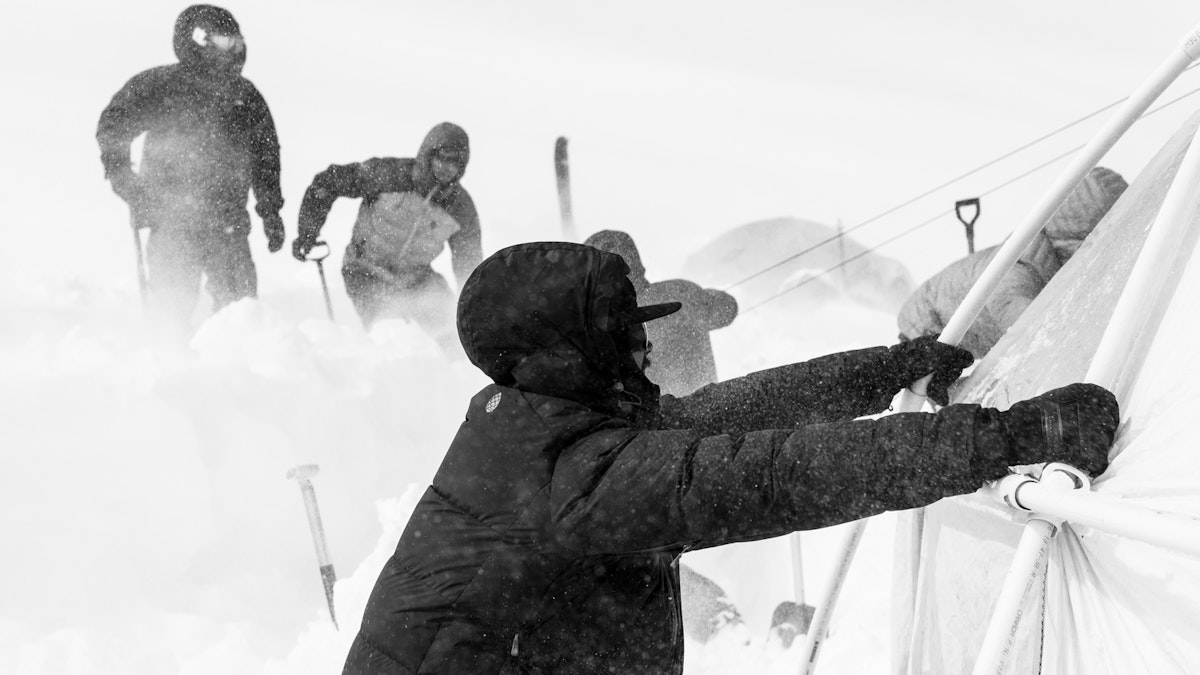
![[GIVEAWAY] Win a Legendary Ski Trip with Icelantic's Road to the Rocks](https://www.datocms-assets.com/163516/1765233064-r2r26_freeskier_leaderboard1.jpg?w=200&h=200&fit=crop)
![[GIVEAWAY] Win a Head-to-Toe Ski Setup from IFSA](https://www.datocms-assets.com/163516/1765920344-ifsa.jpg?w=200&h=200&fit=crop)
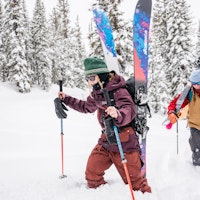
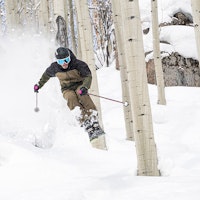
![[GIVEAWAY] Win a Legendary Ski Trip with Icelantic's Road to the Rocks](https://www.datocms-assets.com/163516/1765233064-r2r26_freeskier_leaderboard1.jpg?auto=format&w=400&h=300&fit=crop&crop=faces,entropy)


![[GIVEAWAY] Win a Head-to-Toe Ski Setup from IFSA](https://www.datocms-assets.com/163516/1765920344-ifsa.jpg?auto=format&w=400&h=300&fit=crop&crop=faces,entropy)


